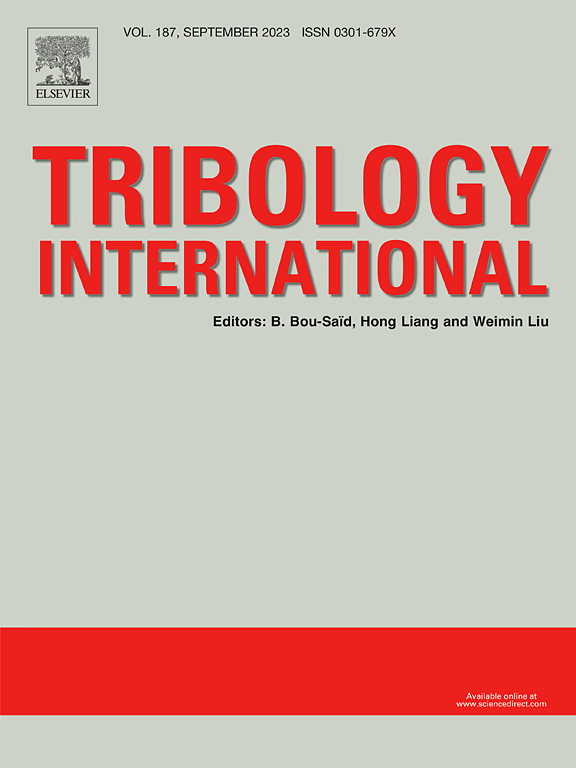Grain-scale microtribological behavior of VCoNi medium-entropy alloy
IF 6.1
1区 工程技术
Q1 ENGINEERING, MECHANICAL
引用次数: 0
Abstract
The tribological behavior of equiatomic face-centered cubic (FCC) VCoNi medium-entropy alloy (MEA) remains underexplored despite of the alloy’s notable tensile strength and ductility. In this study, the tribological performance of VCoNi MEA is investigated using microscratching techniques, with emphasis on the effects of grain orientation, normal force, and scratch velocity. The study has demonstrated that the grain orientation in VCoNi MEA determines the activation of slip systems during the scratching processes, which significantly affects the morphology of wear tracks, slip steps and pile-up, as well as changes in microtribological behavior. As the normal force increases, the degree of wear intensifies, which is attributed to the significant material pile-up and more intense plastic flow. The plastic deformation of VCoNi MEA is found to be independent of scratch velocity within the 0.1–2 µm/s range. Ploughing and micro-shearing are identified as the primary wear mechanisms under various friction conditions. Furthermore, during the ploughing process, the deformation mechanism of the alloy is still dominated by dislocations. The direction of dislocation motion aligns with the direction of pile-up resulted from plastic deformation. The present study offers critical insights into the tribological behavior of medium-entropy alloys and broadens the potential for their applications in friction-intensive environments.
钴镍中熵合金的晶粒尺度微观分布行为
等原子面心立方(FCC)钴镍中熵合金(MEA)具有显著的抗拉强度和延展性,但对其摩擦学行为的研究仍然不足。本研究采用显微划痕技术研究了钴镍中熵合金的摩擦学性能,重点关注晶粒取向、法向力和划痕速度的影响。研究表明,钴镍锰酸锂合金中的晶粒取向决定了划痕过程中滑移系统的激活,从而显著影响磨损轨迹、滑移台阶和堆积的形态,以及微观划痕行为的变化。随着法向力的增加,磨损程度加剧,这是因为材料堆积显著,塑性流动更加剧烈。在 0.1-2 µm/s 的范围内,钴镍锰酸锂的塑性变形与划痕速度无关。在各种摩擦条件下,犁化和微剪切被认为是主要的磨损机制。此外,在犁蚀过程中,合金的变形机制仍以位错为主。位错运动的方向与塑性变形产生的堆积方向一致。本研究为中等熵合金的摩擦学行为提供了重要见解,并拓宽了它们在摩擦密集型环境中的应用潜力。
本文章由计算机程序翻译,如有差异,请以英文原文为准。
求助全文
约1分钟内获得全文
求助全文
来源期刊

Tribology International
工程技术-工程:机械
CiteScore
10.10
自引率
16.10%
发文量
627
审稿时长
35 days
期刊介绍:
Tribology is the science of rubbing surfaces and contributes to every facet of our everyday life, from live cell friction to engine lubrication and seismology. As such tribology is truly multidisciplinary and this extraordinary breadth of scientific interest is reflected in the scope of Tribology International.
Tribology International seeks to publish original research papers of the highest scientific quality to provide an archival resource for scientists from all backgrounds. Written contributions are invited reporting experimental and modelling studies both in established areas of tribology and emerging fields. Scientific topics include the physics or chemistry of tribo-surfaces, bio-tribology, surface engineering and materials, contact mechanics, nano-tribology, lubricants and hydrodynamic lubrication.
 求助内容:
求助内容: 应助结果提醒方式:
应助结果提醒方式:


